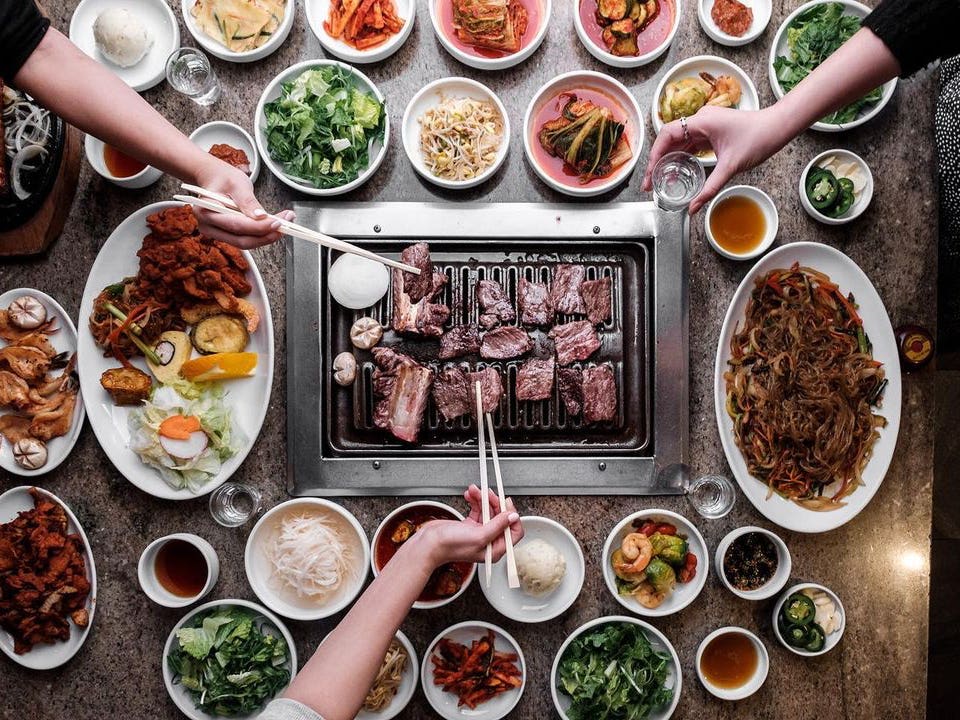Korean BBQ, or Gogigui, is a popular way of grilling meat in Korea. Korean BBQ is known for its unique marinades, sauces and grilling techniques, which result in some of the most delicious meat dishes. Most Korean BBQ dishes require meat, marinade or sauce (often based off soy sauce, garlic, sugar and sesame oil) and sides (like Kimchi, pickled vegetables or steamed rice). The first step is to prepare the meat, trim any excess fat and slice the meat into thin, uniform slices. Next, you need to marinate the meat, Korean BBQ marinades typically contain soy sauce, garlic, sugar, and sesame oil. Once the grill is hot and the meat is marinated, it’s time to start cooking. Once the meat is cooked, it’s time to serve it up.
The Art of Korean BBQ: Discovering the Best Korean Grilling Techniques
Introduction
Korean BBQ, or Gogigui, is a popular way of grilling meat in Korea. It’s been around for centuries and has become a staple of the country’s cuisine. Korean BBQ is known for its unique marinades, sauces and grilling techniques, which result in some of the most delicious meat dishes that you’ll ever try.
Ingredients
Before we start grilling, let’s make sure we have all the necessary ingredients. Most Korean BBQ dishes require the following:
- Meat (such as beef, pork or chicken)
- Marinade or sauce (often based off soy sauce, garlic, sugar and sesame oil)
- Sides (like Kimchi, pickled vegetables or steamed rice)
For this recipe, we’ll be using beef short ribs, but the same techniques can be applied to other meats as well.
Step 1: Prepping the Meat
The first step is to prepare the meat. Trim any excess fat and slice the meat into thin, uniform slices. If you’re using beef short ribs, cut them across the bone so that you have small, flat pieces.
Next, you need to marinate the meat. Korean BBQ marinades typically contain soy sauce, garlic, sugar, and sesame oil. You can buy pre-made marinades, which are often available at Korean grocery stores, or make your own at home. Here’s a simple marinade recipe:
Korean BBQ Marinade Recipe:
- 1/2 cup soy sauce
- 1/2 cup brown sugar
- 2 tablespoons sesame oil
- 6 cloves garlic, minced
- 1 teaspoon grated ginger
- 1/4 teaspoon black pepper
Mix all of the ingredients together and add them to the meat. Use your hands to massage the marinade into the meat, making sure that every slice is coated. Cover the bowl with plastic wrap and refrigerate for at least 1 hour, or up to overnight.
Step 2: Prepping the Grill
While the meat is marinating, you can start prepping your grill. Korean BBQ is traditionally cooked on a grill that’s built into the table, but you can use a gas or charcoal grill as well.
If you’re using a gas grill, preheat it to a medium-high heat. If you’re using a charcoal grill, light the charcoal and let it burn until it’s covered with ash, then spread it out in an even layer.
Step 3: Cooking the Meat
Once the grill is hot and the meat is marinated, it’s time to start cooking.
Take the meat out of the marinade and let any excess marinade drip off. You don’t want a lot of excess marinade on the meat as it will cause it to burn quickly.
Place the meat on the grill and cook for about 2-3 minutes per side, or until it’s browned and slightly charred.
Tip:
If you’re using beef short ribs, you can cook them with the bone side facing down first. This will help the meat cook more evenly, as the bone will act as an insulator and prevent the meat from getting too charred.
Step 4: Serving the BBQ
Once the meat is cooked, it’s time to serve it up.
In Korea, Korean BBQ is often served with a variety of side dishes, including steamed rice, Kimchi, and pickled vegetables. You can also serve it with a dipping sauce made from sesame oil and salt, or a spicy dipping sauce made from Korean chili paste.
To eat Korean BBQ, take a piece of meat with your chopsticks, wrap it in a lettuce leaf with some rice and any other side dishes you like, and then dip it in the sauce. It’s a delicious and interactive way of eating, so enjoy!
Conclusion
Korean BBQ is an art form that takes practice and patience to perfect. With these simple steps and ingredients, you can discover the best Korean grilling techniques and impress your family and friends with your delicious creations. So grab some meat, fire up the grill, and get ready to taste the magic of Korean BBQ.
